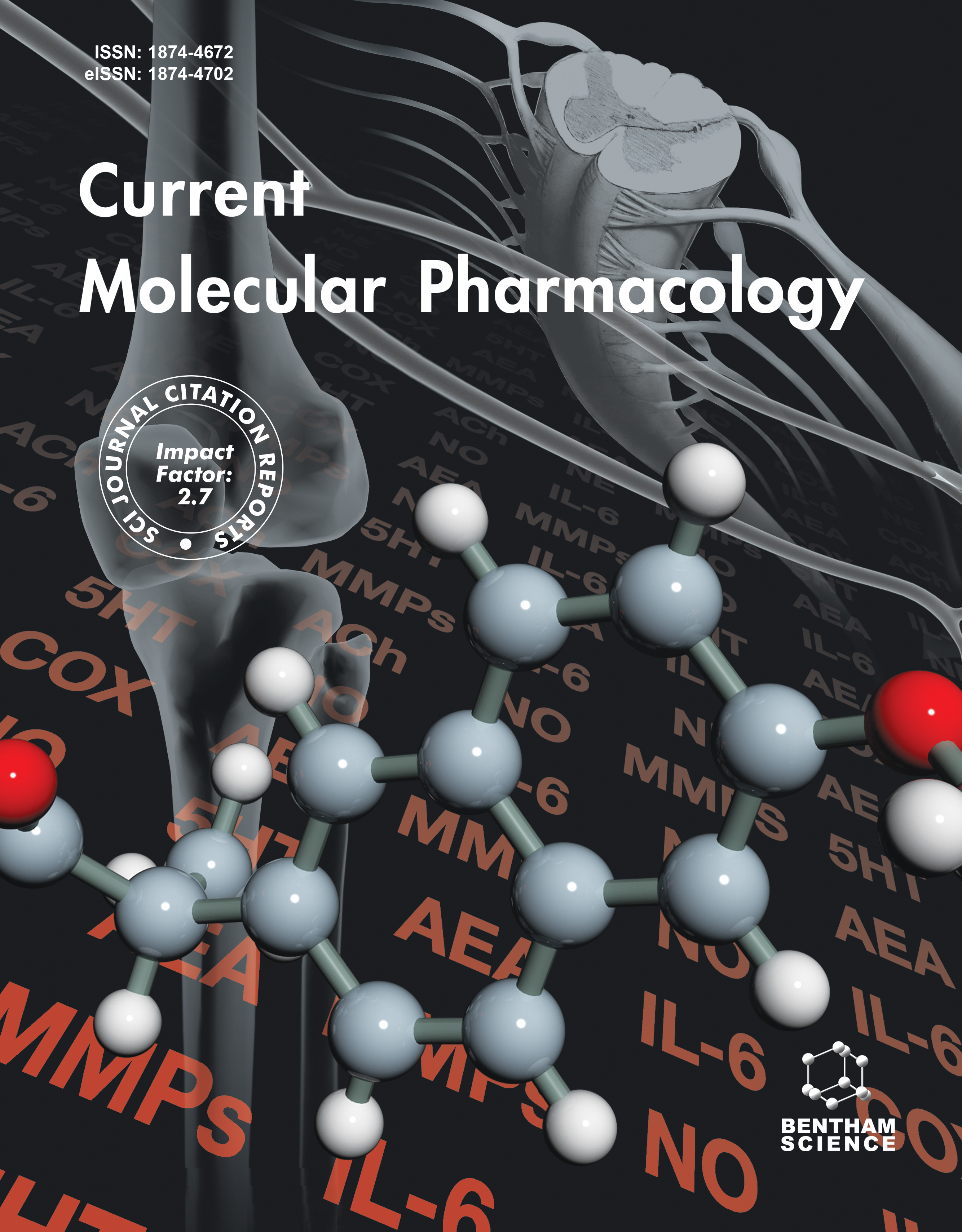- Home
- A-Z Publications
- Current Molecular Pharmacology
- Previous Issues
- Volume 10, Issue 2, 2017
Current Molecular Pharmacology - Volume 10, Issue 2, 2017
Volume 10, Issue 2, 2017
-
-
Mevalonate Pathway and Human Cancers
More LessAuthors: Seyedeh Zahra Bathaie, Mahboobeh Ashrafi, Mahshid Azizian and Fuyuhiko TamanoiMevalonate (MVA) is synthesized from 3-hydroxy-3-methylglutaryl coenzyme A (HMG-CoA) by HMG-CoA reductase (HMG-CoAR). MVA is further metabolized to farnesyl pyrophosphate (FPP), a precursor of cholesterol and sterols. FPP is also converted to geranylgeranyl pyrophosphate, and these lipids are used for post-translational modification of proteins that are involved in various aspects of tumor development and progr Read More
-
-
-
Interconnection of Estrogen/Testosterone Metabolism and Mevalonate Pathway in Breast and Prostate Cancers
More LessThe metabolic steroid hormones, 17β stradiol (E2) and testosterone play key roles in several functions including carbohydrate, lipid and protein metabolism, cellular signaling, cell proliferation, and cancer promotion. Steroid hormones have long been characterized as cell proliferation and differentiation regulators and are closely related to the development of breast and prostate cancers. Moreover, cholesterol metabolism, Read More
-
-
-
Mevalonate Cascade and Neurodevelopmental and Neurodegenerative Diseases: Future Targets for Therapeutic Application
More LessThe mevalonate cascade is a key metabolic pathway that regulates a variety of cellular functions and is thereby implicated in the pathophysiology of most brain diseases, including neurodevelopmental and neurodegenerative disorders. Emerging lines of evidence suggest that statins and Rho GTPase inhibitors are efficacious and have advantageous properties in treatment of different pathologic conditions that are relevant to t Read More
-
-
-
Mevalonate Cascade and Small Rho GTPase in Spinal Cord Injury
More LessAuthors: Eftekhar Eftekharpour, Pandian Nagakannan, Mohamed Ariff Iqbal and Qi Min ChenThe mevalonate pathway has been extensively studied for its involvement in cholesterol synthesis. Inhibition of this pathway using statins (3-Hydroxy-3-methylglutaryl-coenzyme A reductase inhibitors; HMGR inhibitors) is the primarily selected method due to its cholesterol-lowering effect, making statins the most commonly used (86-94%) cholesterol-lowering drugs in adults. This pathway has several other by-products that Read More
-
-
-
Statins, Mevalonate Pathway and its Intermediate Products in Placental Development and Preeclampsia
More LessAuthors: Leonardo Ermini, Martin Post and Isabella CaniggiaThe mevalonate pathway synthesizes intermediates and products such as cholesterol and nonsterol isoprenoids that are crucial for cell survival and function. In the human placenta, the prenylation of proteins, rather than cholesterol synthesis, represents the main "metabolic target" of mevalonate metabolism. Major cellular functions depend on isoprenylation including proliferation, migration, metabolism and protein gly Read More
-
Most Read This Month
Article
content/journals/cmp
Journal
10
5
false
en


